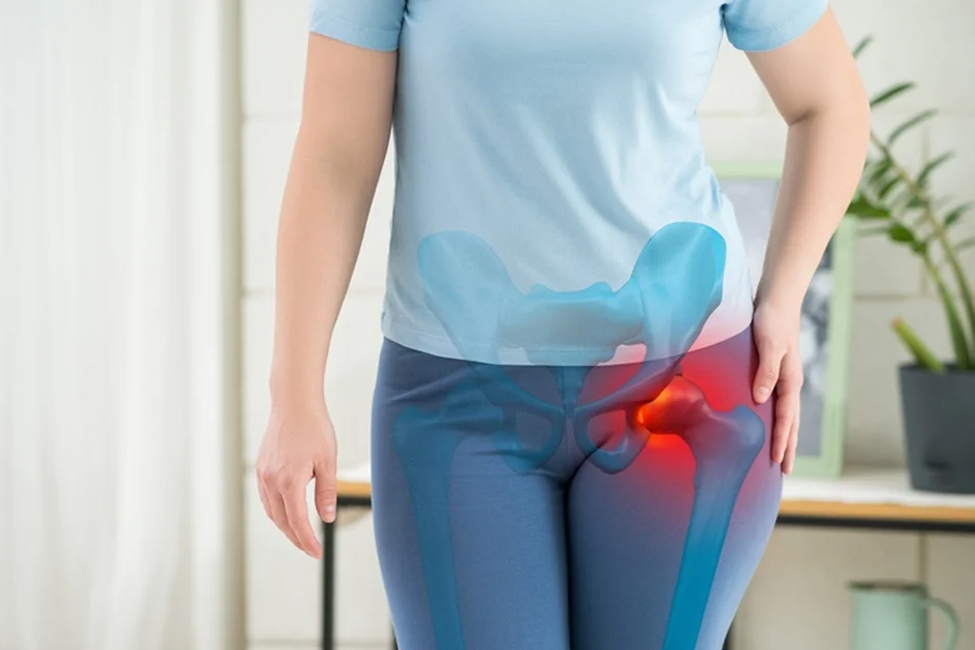Hip Labral Injuries
When the Cushion Around the Hip Joint Tears
The hip labrum is a rim of cartilage that cushions and stabilises the ball-and-socket joint. A tear here can cause groin pain, clicking, or stiffness in the hip.
Why the Hip Labrum Matters
The labrum acts like a gasket around the hip socket, helping the joint move smoothly and stay stable. When it tears, movement can feel restricted or painful, and the hip may feel less secure.
Common Causes of Labral Tears
Labral injuries can happen suddenly or develop over time:
- Sports injuries: twisting or pivoting movements in activities like football, hockey, or dance
- Structural problems: conditions such as hip dysplasia or femoroacetabular impingement (FAI)
- Repetitive strain: wear from frequent running, squatting, or heavy lifting
- Degeneration: age-related wear-and-tear of the cartilage
- Trauma: falls, car accidents, or direct blows to the hip
Symptoms That May Point to a Labral Injury
Labral tears don’t always cause symptoms, but when they do, patients may notice:
- Groin or hip pain, especially during activity
- A clicking, locking, or catching sensation in the hip
- Stiffness or reduced range of motion
- Pain when sitting for long periods
- A sense of instability in the hip joint
How Doctors Diagnose Labral Tears
Because labral symptoms mimic other hip problems, careful assessment is important. Diagnosis may involve:
- Physical examination: testing movement and stability
- Imaging: MRI with contrast (MR arthrogram) is often the best test for labral tears
- Medical history: reviewing sports activity, past injuries, or hip conditions
Treatment Options for Hip Labral Injuries
Treatment depends on the severity of the tear and symptoms:
- Non-surgical care: rest, activity modification, physiotherapy, and medications
- Injections: to reduce inflammation and pain
- Arthroscopic surgery: keyhole surgery to repair or remove the torn portion of the labrum if symptoms are persistent
Living with a Labral Injury
Some people can manage labral tears with rest and rehabilitation, but others may find everyday activities like sitting, climbing stairs, or sports increasingly painful. Seeking care early helps prevent worsening symptoms and allows tailored treatment.
Frequently Asked Questions (FAQ)
1. Can a labral tear heal on its own?
Small tears may improve with rest and physiotherapy, but many labral tears don’t heal fully without treatment because cartilage has limited blood supply.
2. What’s the difference between hip arthritis and a labral tear?
Arthritis involves widespread cartilage wear in the joint, while a labral tear is a specific injury to the cartilage rim. Both can cause stiffness and pain.
3. How do I know if my hip clicking is a labral tear?
Clicking alone isn’t always a labral tear. If clicking comes with pain, stiffness, or catching, it’s worth getting checked.
4. Is surgery always needed for labral tears?
No. Many patients improve with physiotherapy and lifestyle changes. Surgery is considered if pain persists despite non-surgical care.
5. How long is recovery after labral repair surgery?
Recovery can take several months, with physiotherapy playing an important role in regaining strength and mobility.
Book a Consultation for Hip Pain or Labral Injury
If you have hip pain, stiffness, or clicking that isn’t improving, book a consultation at Mash Spine & Orthopaedics for an accurate diagnosis and treatment options.





